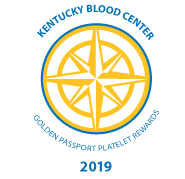
The Smart Choices in Platelet Donation
Blood is essential to the functioning of the human body. Nothing can replace it, which is why platelet donation process is so important. Comprised of red blood cells, plasma, platelets and white blood cells, it enables the EFS to manufacture and distribute labile blood products. The donations of blood make it possible to treat every year a million patients, or 114 patients every hour.

The Smart Choices
Plasma donation can, for example, treat burn victims but also prepare medicines to treat hemophiliacs. The gift of platelets allows treating bleedings at patients. Bone marrow donation and placental blood donation are used for cell therapy. EFS takes every precaution that the donation, whether it be whole blood, platelets, plasma, bone marrow or placental blood, is carried out under conditions of optimal quality and safety for the donor as well as the receiver.
- To give blood, you must be of age and between 18 and 70 years old. To give your plasma and platelets, you must be between 18 and 65 years old.
- After being greeted by a secretary of the EFS who registers his registration, the applicant for donation completes a pre-donation questionnaire. Then he is received by a doctor or nurse for a confidential interview, which ensures that the gift does not pose a risk to him or to the recipient. Declared fit, the donor then signs a card that materializes his consent, countersigned by the doctor.
- He is then greeted by a nurse who takes the sample tubes for analysis. The sample can then begin, for an average duration of ten minutes.
A campaign is all the more important that each year, 170000 usual donors leave this great chain of solidarity because of reaching the age limit to give. It is therefore important for the EFS to convince new donors and especially younger generations. Less than 4% of French people of blood age went on a collection in 2019.
Blood donation, key figures:
- 98 million donations (blood, plasma, platelets) in 2019
- 1 million patients treated each year thanks to blood donation
- The shelf life of blood products is limited: 7 days for platelets, 42 days for red blood cells and 1 year for plasma.
- Women can make up to 4 donations of whole blood a year, men 6.
- The minimum time between each donation is 8 weeks.
- To give blood, you must be between 18 and 70 years old.
- 10,000 donations needed each day
A blood donation lasts approximately forty minutes, including approximately ten minutes of sampling. A snack is then offered. After a blood donation, it is important to eat and hydrate.
This time of conviviality allows the collection team to keep an eye on the donor:
According to the organizations, a donation of blood can sometimes weaken! It is also advisable not to practice a violent effort in the hours that follow. This summer, the French blood establishment had launched a national emergency appeal. However, since this period of re-entry is generally marked by the resumption of sustained hospital activity, especially with planned operations, which leads to an increase in the consumption of blood products, the EFS is launching a new awareness campaign to highlight the importance to give blood regularly throughout the year.
